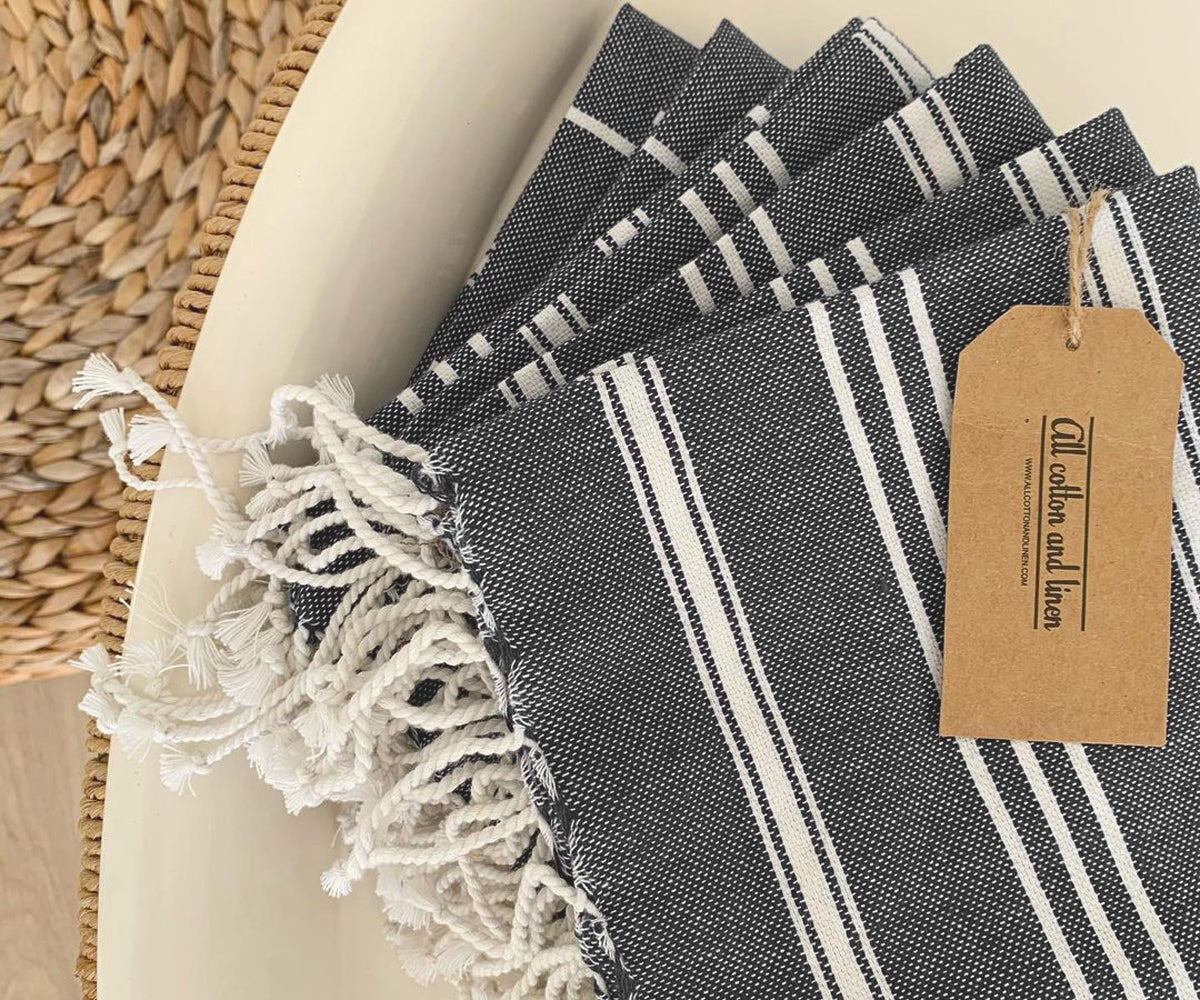
Understanding the Challenge
Red wine stains can be a real nightmare on white rectangle tablecloths. Their deep, dark hues and tannins make them particularly stubborn. Moreover, they have a knack for showing up at the worst possible moments. That's why it's crucial to act swiftly when disaster strikes.
Gather Your Supplies
Before we get into the nitty-gritty of stain removal, let's ensure you have everything you need for your linen tablecloth. You want to be caught with supplies when a spill happens on your tablecloth.
Here's what you'll need to remove red stains from your white tablecloths:
- Clean white cloth or paper towels
- Table salt
- Club soda
- Hydrogen peroxide
- Cornstarch
- Dishwashing detergent
- Wine Away (optional, but highly recommended)
- Washing machine
- Sunlight
Now that you're prepared let's tackle those stains on your tablecloths. Choose stain removal methods based on the stain's severity and the fabric type. The following methods are listed for your reference. Start gently and escalate if necessary.

Blot, Don't Rub
The first rule of dealing with red wine stains on your tablecloths is to avoid rubbing them, whether they are printed tablecloths or not. Rubbing can spread the stain and push it deeper into the fabric. Instead, grab a clean white cloth or paper towel and gently blot the stain on your white round tablecloth. Be patient; removing as much wine as possible might take a few rounds of blotting.

Salt to the Rescue
Salt is a lifesaver when it comes to red wine stains. While the stain is still wet, generously sprinkle table salt over the affected area of your white rectangle tablecloth. The salt will absorb the wine and prevent it from setting. Leave it for a few minutes, and the salt will turn pink as it works its magic.
Club Soda Magic
Club soda is another fantastic ally in the battle against red wine stains on your linen tablecloths. Pour club soda over the stain, allow it to fizz, and then blot the area as it lightens.

The Power of Hydrogen Peroxide
Hydrogen peroxide can be a game-changer for stubborn stains on your white tablecloths. To remove the stain effectively, you should create a solution by combining one part hydrogen peroxide with two parts water. Apply the solution to the red-stained area, let it sit for a few minutes, and then blot. Please be cautious when using this solution on colored fabrics, as hydrogen peroxide can cause bleaching.
Cornstarch and Dishwashing Detergent
Mix cornstarch and a few drops of dishwashing detergent for a powerful stain-fighting combination to create a paste. Apply it to the stain, dry it, and then scrape it off. This method can be handy for older stains.
Pre-Treat with Wine Away
If the stain proves to be a tough opponent on your tablecloths, consider using a commercial stain remover like Wine Away. Follow the product's instructions, and it can work wonders on red wine stains.

Time to Launder
After treating the stain, it is essential to wash the tablecloth. Follow the instructions on the fabric label and use a detergent suitable for the material. If the stain remains after washing, it is best not to put it in the dryer, as heat can set the stain. Instead, repeat the stain removal process.
Sunlight's Natural Bleaching
Sunlight is a powerful natural agent that has bleaching properties. It can effectively help remove residual stains and traces, leaving the surface clean and bright. Hang your tablecloth in direct sunlight to dry. The sun's rays will work magic and help fade any remaining discoloration.
Dealing with Set-In Stains
If the stain has already been set, removing it becomes more challenging. You may need to repeat the stain-removal process several times or consider professional cleaning services for delicate fabrics.

Preventing Future Stains
While we can't guarantee you'll never reencounter a red wine stain on your outdoor tablecloths, here are a few tips to minimize the risk. Use wine glass charms to keep track of your glass. Invest in spill-resistant tablecloths or placemats. Act quickly when a spill occurs. Consider stain-resistant fabrics for your table linens.
Additional Tips for Different Fabrics
Each fabric reacts differently to stain removal techniques. Here are some specific tips for common tablecloth fabrics:
- Cotton: Cotton tablecloths are durable. Follow the general stain-removal steps, but be cautious with hydrogen peroxide, which can bleach the fabric.
- Linen: Linen can be delicate. Use gentler methods, like salt and club soda. Avoid rubbing or using harsh chemicals.
What NOT to Do:
- Don't Rub: Avoid rubbing the stain; it spreads it.
- Don't Wait: Act quickly; stains set over time.
- Don't Skip Blotting: Always blot, never scrub.
- Don't Use Hot Water: Heat can set the stain; use cold water.
- Don't Ignore Fabric Care Labels: Follow care instructions.
- Don't Overlook Professional Help: For set-in stains, consider experts.
- Don't Skip Preventive Measures: Be proactive to prevent future stains.
Red wine stains on your luxury tablecloths might seem like a disaster, but you can make them disappear with the proper techniques and patience. Remember, the key is to act quickly; most stains can be conquered. So, next time you raise a glass, you can confidently do so in your round-cloth or rectangle tablecloths.







